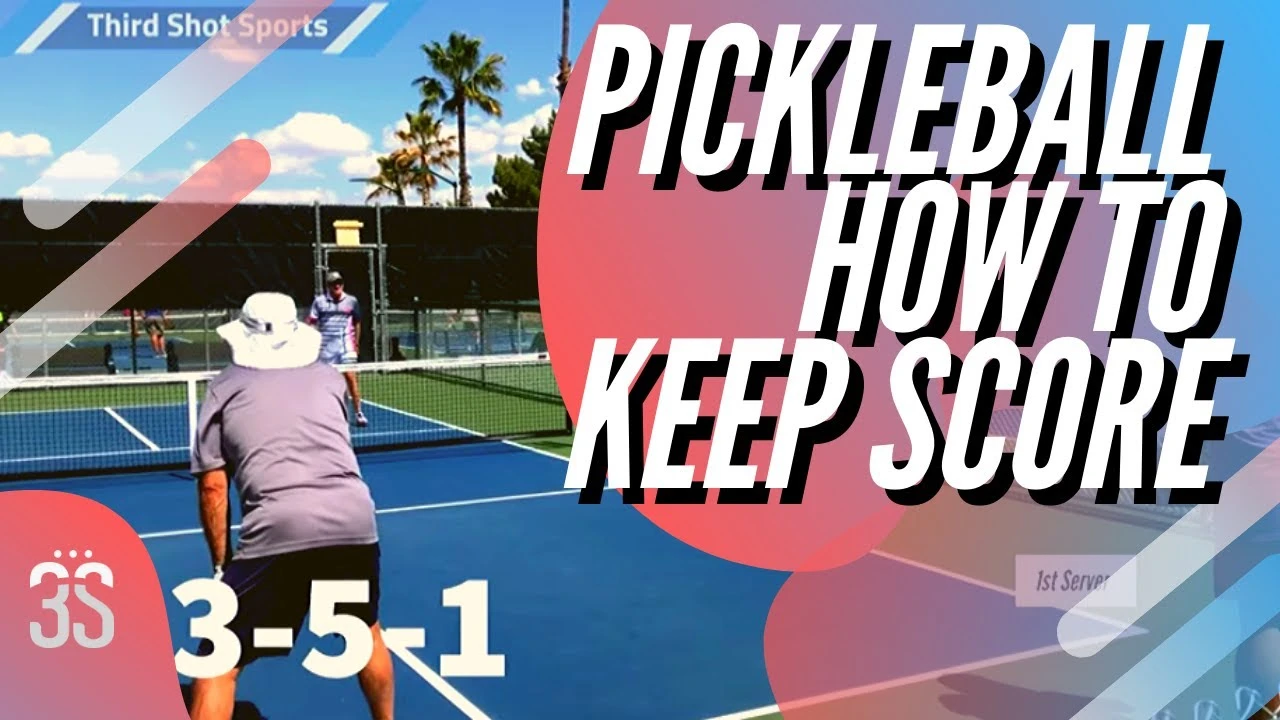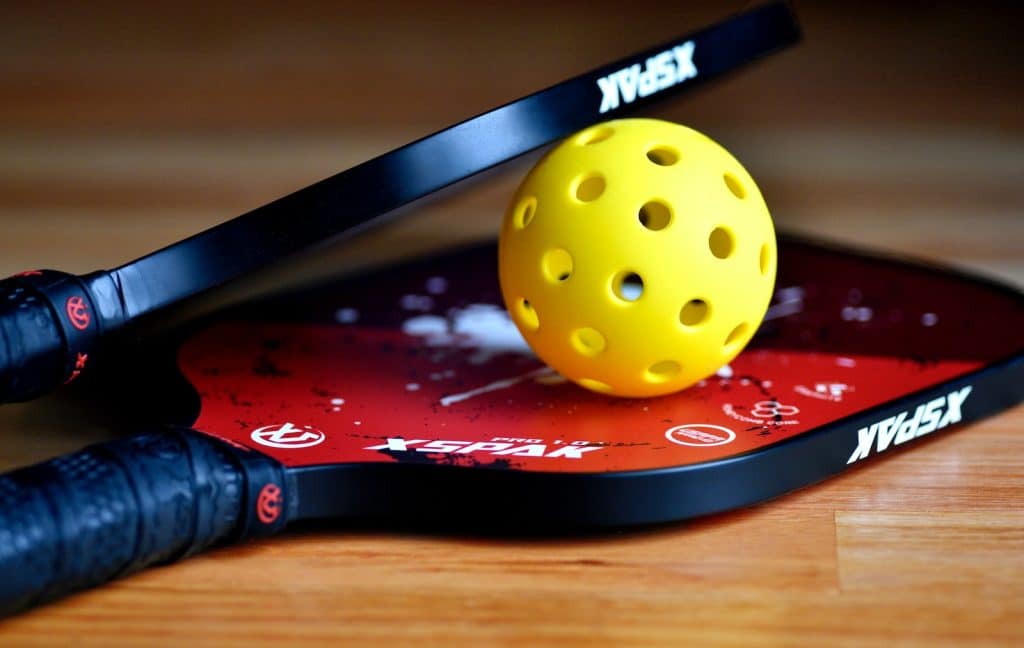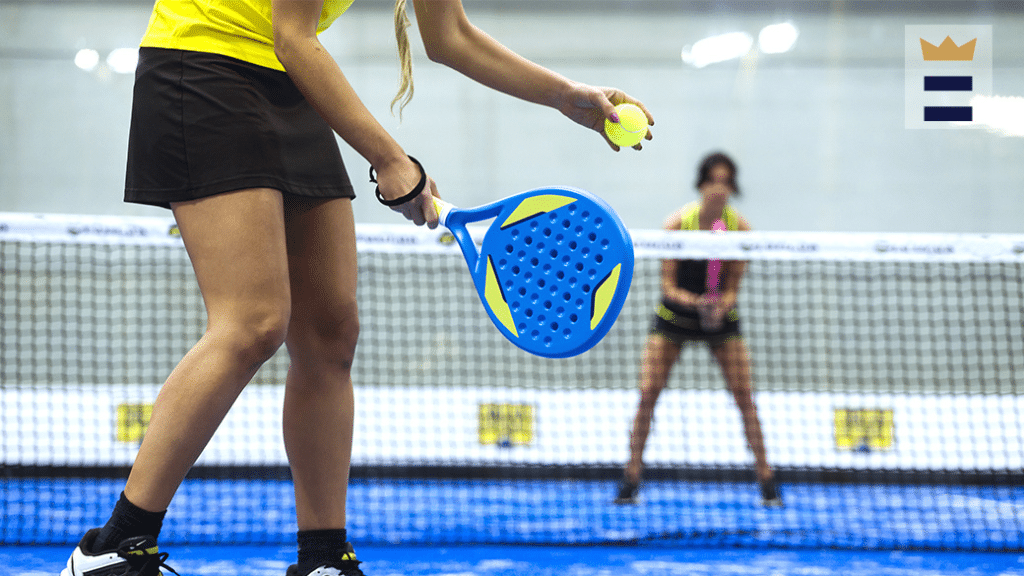Jenny was new to pickleball and playing her first doubles tournament game. The score was tied up 9-9 – so close to match point! It was her team’s serve, so Jenny confidently called “10-9-1” and struck the ball. But suddenly the opponents cried foul, saying the score was still 9-9. If only Jenny had kept better track of the scoring!
As a beginner, understanding the scoring system is essential to fully enjoy the game and compete effectively. In this article, we will guide you through the basics of pickleball scoring, from serving to winning a game. In this blog, we’ll demystify pickleball scoring, making it easy for you to stay on top of the game, even after just one point!
Here are the basics of pickleball scoring for beginners (video):
- Pickleball is played to 11 points, win by two.
- You have to verbally call your score just before you serve
- The serving team starts in the right service court, and the first server calls out the score as their team’s score, the opponent’s score, and their server number.
- The serving team switches places after scoring a point, until they lose a rally.
- If the serving team loses a rally, it’s a sideout, and the opposing team has two chances to serve.
- The very first server of a game serves from the right service court but starts as the second server, called out as “zero, zero, two.”
- In singles play, each player serves once, and score determines the service court (even score for right, odd score for left).
Table of Contents
Basics of Pickleball Scoring
In pickleball, the scoring system is designed to be simple and easy to understand, making the game more accessible and enjoyable for players of all skill levels. In this section, we will discuss the basics of pickleball scoring, focusing on doubles play, scoring points, and winning a game.
Pickleball can be played in singles or doubles format and is known for its unique scoring system. The game is typically played to 11 points, and a team must win by at least a two-point margin. Understanding how to keep score in pickleball is crucial for players of all levels, as it not only helps in tracking progress, but also in strategizing during the game.
In rally scoring, unlike the side-out system, points can be scored by either team, regardless of who served. This method accelerates the pace of the game and is often preferred in casual play.
Doubles Pickleball Scoring
In doubles pickleball, the score is called out with three numbers:
- The serving team’s score
- The receiving team’s score
- The server number (1 or 2)
For example, a score of “5-4-1” would indicate the serving team has 5 points, the receiving team has 4 points, and the serving team’s Server 1 is currently up to serve.
The first server of a doubles game always starts serving from the right service court and is referred to as the second server, so the starting score is “0-0-2.” After scoring a point, players switch sides, but only the serving team switches positions. If the serving team loses a rally, the second server (Server 2) will then serve from their current position on the court. After losing another rally, the serve rotation moves to the opposing team.
Tip: To remember who starts as Server 2, imagine your server hand starting on the right and serving across court. Your server hand moves left after scoring a point.
Scenario: Team A serves first and scores a point, making the score 1-0-1. On their second serve attempt, Team A loses the rally, so Team B gains a side out. The score is now 1-0-2, with Team A’s Server 2 now serving.
Scenario 2: The score is 4-2-1. Team A wins a rally to make it 5-2-2. But on the next point, Team B gains a side out. The score becomes 5-3-1, with Team B now serving.
Scoring Points
Pickleball points are scored similarly to those in tennis. A point is scored whenever the serving team’s shot lands within the opposing team’s non-volley zone (also known as the kitchen) and is not touched by the opposing team. If the ball is touched by the opposing team, either in the air or after bouncing, the receiving team scores a point.
An important rule to remember is that points can only be scored in pickleball by the team that is currently serving. The receiving team must win the rally to gain a chance to serve and subsequently score points of their own.
Winning a Pickleball Game
The first team to reach 11 points, with a lead of at least 2 points, wins the game. If the score becomes tied at 10-10, the game continues until one team achieves a 2-point advantage. In tournament play, games may be played to 15 or even 21 points, but the 2-point margin rule remains the same.
As mentioned earlier, pickleball games are played to 11 points, with the team that first reaches 11 points winning the game. However, to ensure a fair and competitive match, a 2-point margin is required for a team to win. This means that if both teams reach 10 points, the game will continue until one team has a 2-point lead over the other.
In addition to the traditional scoring system of playing to 11 points, some pickleball tournaments use alternative scoring systems, such as playing to 15 or 21 points. These variations are typically used in more competitive settings or when matches are best-of-three or best-of-five formats. The specific scoring system used will depend on the tournament rules and regulations.
Advanced Scoring Strategies for Competitive Play
Experienced players can employ advanced strategies to enhance their scoring opportunities:
- Targeting the Non-Volley Zone: Placing shots in this area can challenge opponents.
- Mixing Up Serves: Using a variety of serves keeps opponents guessing.
- Strategic Use of Lobs and Feints: These techniques can disrupt the opponent’s positioning and create scoring opportunities.
Player Positioning for Doubles Pickleball
Correct positioning of players is vital in pickleball, as it directly impacts a team’s ability to communicate, coordinate, and execute effective strategies. Faults can be called for serving or returning serve from the wrong position. Here are some key rules:
Serving Team’s Initial Score
The serving team starts with the server in the right-back court, while the non-serving partner stands in the right-front court. This positioning allows the serving team to quickly cover the court and respond to the opponent’s return.
Server #1 and Server #2
In doubles pickleball, each team has two servers, referred to as Server #1 and Server #2. The serving order alternates between the two players on the same team. At the start of a game, the first server serves from the right service court and is considered Server #2. After the first service, the server switches to the left service court and becomes Server #1. This pattern continues throughout the game.
Correct Player Positions
Throughout the game, both the serving team and receiving team must ensure players are correctly positioned based on the current score and who is serving. The serving team switches sides after winning a point and scoring.
Scenario: If the score is 2-3-1, the serving team’s Server 1 should be in the left service court, having switched sides after their team’s previous point.
Faults and Correcting Positions
Faults are called when rules are broken, such as serving from the wrong service court for the current score. When a fault occurs, players must resume play from the correct position based on the current score.
Common faults include:
- Ball Out of Bounds: If the ball lands outside the court boundaries.
- Failure to Clear the Net: When the ball doesn’t make it over the net during a serve or return.
- Non-Volley Zone Faults: Occurs if a player volleys the ball while standing in the non-volley zone.
Each fault results in a point for the opposing team or a loss of serve, making it essential to play with precision and awareness.
To avoid positioning mistakes, be extra vigilant about checking your location when returning to the court after timeouts or between games. It’s easy to lose track when play is interrupted!
Pickleball Stacking Rules
Stacking is an advanced doubles strategy that exploits the flexibility of player positioning rules. Stacking can be used strategically, for example, to protect a weak backhand return of serve. The stronger player would start on the left to cover that weakness.
Advanced Doubles Pickleball Positioning Strategy
Stacking involves both players on a team starting the point on the same side of the court, often based on their strengths. After the serve, they are free to switch sides and move to their preferred positions for the remainder of that rally.
Stacking Permitted Rules
The key rules that enable stacking are:
- The serving team can switch sides after serving.
- The receiving team can switch sides after the return.
- As long as the server starts in the correct position, the partner can be anywhere.
Stacking provides teams with more options to maximize each player’s strengths and minimize weaknesses.
Asking the Referee About the Pickleball Score
During tournament play, the referee oversees the match and scoring. Players are permitted to ask the referee questions about the score before the serve.
In official games, players can ask the umpire questions to make sure they play correctly. Before serving, players may inquire about the current score, the correct server, proper positioning, the appropriate serving side, and the last server on their team. Having a good relationship with the umpire is important for making sure the match is fair and honest.
Questions Permitted Before Serve
Before serving, players may ask the referee:
- What is the score?
- Who is the correct server?
- Are we in the correct position?
- Which side should I be serving from?
- Who last served for our team?
The referee will call timeout, provide the requested information, and then resume the game.
Referee Responses
Upon a valid request, the referee is expected to provide the correct score information to the players.
Handling Overly Inquisitive Teams
While rules allow score clarification requests, etiquette encourages players to not excessively question the referee about points and positioning. The referee can issue warnings for excessive inquiries that disrupt match flow.
By mastering pickleball scoring concepts and leveraging referee guidance, you can focus your energy on improving skills and match strategy.
Conclusion
Keeping accurate score is an integral part of competitive pickleball matches. Understanding the nuances of pickleball’s scoring system, player positioning, stacking strategies, and score clarification procedures allows players to fully focus on their game. With a solid grasp of these key scoring concepts, players can direct their energy towards skill development, tactics, and enjoying pickleball – one of America’s fastest growing sports!



